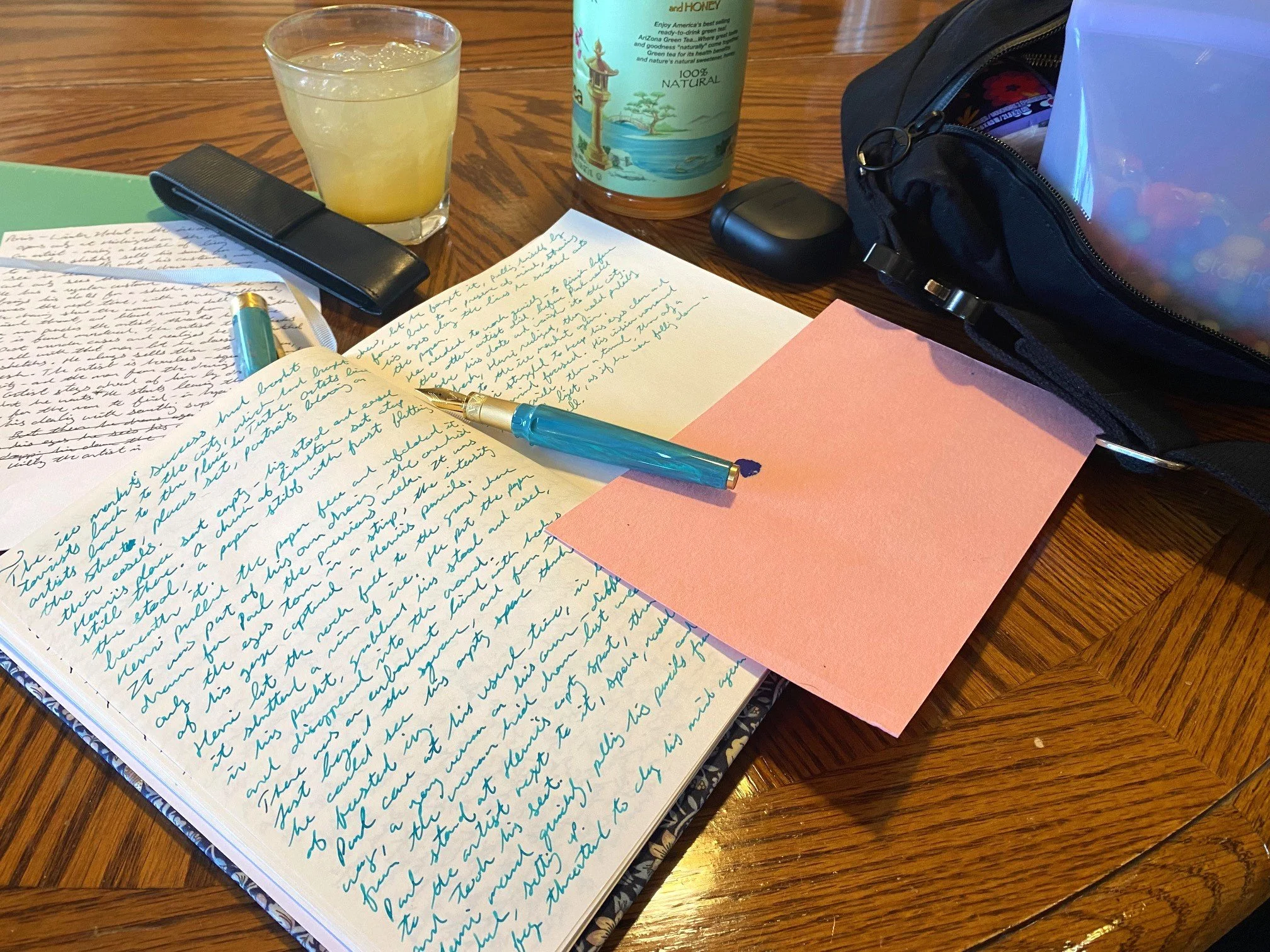(Sarah Read is an author, editor, yarn artist, and pen/paper/ink addict. You can find more about her at her website and on Bluesky. And her latest book, The Atropine Tree, is now available!)
Last weekend I made another escape to the lake to write. It was less of a writing retreat this year, and more of a writing battle. I've been fighting my way through some gnarly writer's block for a while now, but the deadlines can only be pushed so far before they break, and some of my projects are testing the strength of those limits.
There was very little handwriting this time. Most of my projects are in the digital phase of their existence. My ideal time at the lake is spent with no screens at all, just me, my pen and paper, and the sound of the waves. This time it was the clack of the keyboard as I frantically typed out and added scenes to an existing project.
I still brought my notebook, though. Just in case. This time, my travel companions were my Pebble Stationery Co. notebook in the Hobonichi Tragen case and the Leonardo Momento Zero Grande 2.0 Guilloche I just reviewed last week. While I didn't really get the chance to use them this time, it was a comfort just having them there, just in case inspiration struck and a new story demanded to be written, deadlines be damned.
That didn't happen, though, and that hasn't happened in a long time.
I've gone through these droughts before, and there will be others in the future. Every time, the way out remains the same: momentum begets momentum. Writing begets writing. The best way to bring on a hearty rainfall is to water your lawn.
So, through my block, I wrote about 13,000 words that weekend. I didn't feel inspired, I wasn't "in the flow," and it felt more like wringing water from a stone than spinning straw into gold. But words were made. Not enough of them--I still missed my deadline--but it was progress, and I hope that progress will beget progress.
Now I'm packing my bags for a trip to a writing conference. I'm packing my pen and my notebook and some optimism, and hoping to soak in some inspiration. What's great about the tools we use is that they can always be with us, ready when we are, or when we're not.
Enjoy reading The Pen Addict? Then consider becoming a member to receive additional weekly content, giveaways, and discounts in The Pen Addict shop. Plus, you support me and the site directly, for which I am very grateful.
Membership starts at just $5/month, with a discounted annual option available. To find out more about membership click here and join us!

















